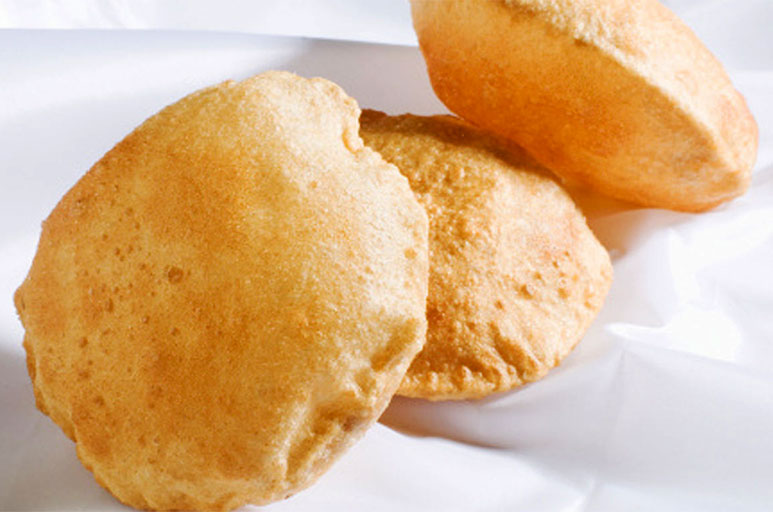Soft and puffed poori or puri
All of us have tasted soft and puffed poori. But, how many of us have an actual idea about the method of preparation of soft and tasty poori.
The method of preparation of poori (puri) doesn’t involve the use of yeast or any other leavening agents. Poori is usually served with potato recipes. This delicious breakfast recipe is loved by all sections of the society irrespective of their age. Wheat flour, melted ghee and rava are the essential components of making this recipe. The consistency of the dough, the thickness of the rolled poori and the quality of the oil used are the important parameters which will determine the softness and the puffiness of pooris.
Once you have prepared the dough, do not keep it for more time as it will make the poori more oily. While making the dough, a small quantity of ghee is added to improve the softness. Addition of a pinch of sugar in the dough can provide a golden brown colour to the poori. Rolled poori should be of even thickness and it should be slightly thicker than that of a chappati, as the thinner ones don’t puff up like the thick ones. Have a look at the ingredients required and the method of preparation of poori.
Ingredients require for the preparation of poori
- 1 cup of wheat flour (atta)
- 1/2 teaspoon of melted ghee
- 1/2 teaspoon of rava/sooji
- Cooking oil as per the requirement
- A pinch of sugar (Optional)
- Water as per the requirement
- Salt as per the taste.
Method of preparation of soft and puffed poori
- Take the wheat flour in a wide bowl and add a pinch of salt, sugar, rava and ghee. Mix it well and add the water in a little by little manner.
- Knead the wheat flour to form a dough. Dough should not be too stiff nor too soft, instead it should be a little stiffer and tight than chapati dough.
- Take out small portions from the dough and make lemon sized balls.
- Apply oil to this lemon sized dough piece and roll it into a circular shape. It should be of a medium thickness. It shouldn’t be too thick or too thin.
- Heat the oil in a deep frying pan. Once the oil is warm, check out whether the oil is sufficiently heated by adding a small ball-sized dough piece into the oil. If the round shaped dough ball rises steadily and briskly to the top, then we can conclude that the oil is sufficiently hot.
- Take out one circular shaped rolled poori and add to the oil. It will puff up and rise to the top.
- Once the bottom side attains a light brown colour, turn it upside down so that the whole of the poori gets a light brown colour.
- Once it is ready, take out from the oil and keep it on paper napkins to drain away the excess oil.
- Repeat the process so that the whole dough is made to puffy and delicious pooris.
- Serve it with potato recipes and chutney.



















